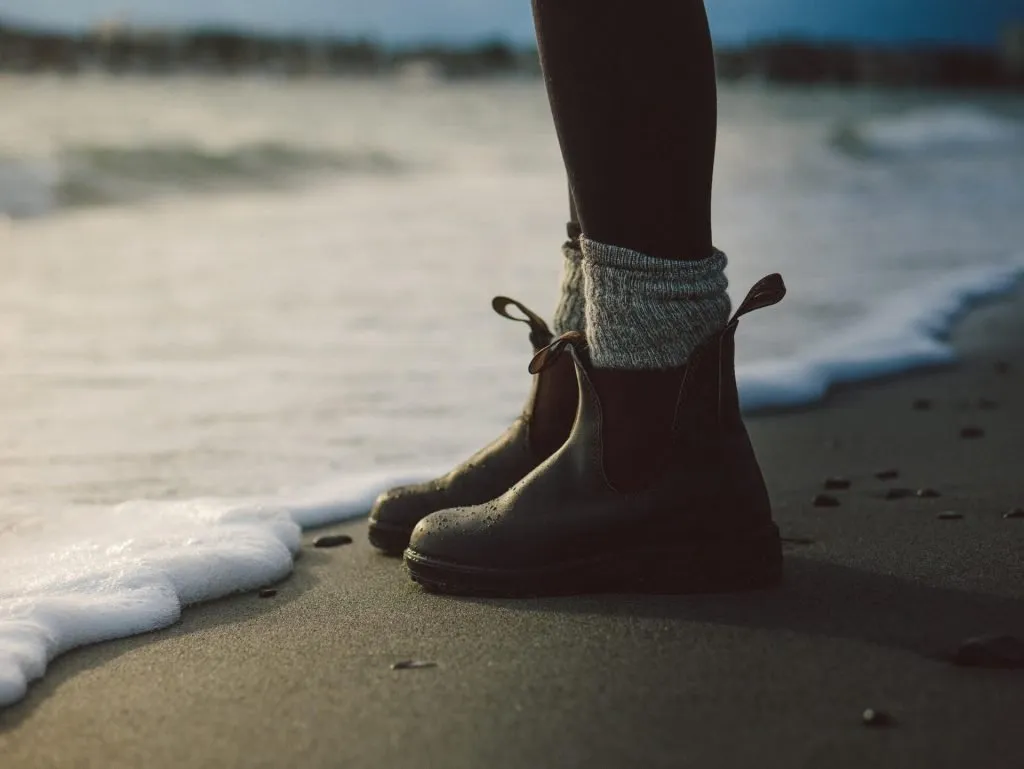
Going out for a hike has many obstacles to overcome, but if the forecast calls for rain then you can be in for a long day. If you’re like me, when I started hiking all I had was my old running shoes and some rain boots for those rainy days. If the weather says it will rain on your hike, can you hike in rain boots?
You can technically hike in your rain boots as they will keep your feet completely dry from the rain, however I don’t recommend it as your feet will likely be very uncomfortable, sweaty, hot, and in pain before the end of your hike. Rain Boots offer poor ventilation, very little padding, and the material will cause great discomfort as it rubs against your feet and ankles during the duration of your hike.
Lets go over things you should know about your rain boots and what alternatives you have so you can hike comfortably and safely.
Are rain boots good for hiking?
Breathability
When I refer to rain boots, I will be talking about the rubber boots where the rubber goes from the toes to the ankle. Rain boots are designed to keep the rain out. Some are designed to keep rain out and look good, but none are designed to help you hike comfortably. The typical rain boot design has a layer of rubber or a water membrane to prevent water from getting into your shoes. This is good to keep water out, but also traps the heat and sweat that your feet will generate while hiking. For this reason alone rain boots are not good for hiking.
Traction
Another reason rain boots are not a good choice for hiking is that they are all created with the urban dweller in mind. They were made for you to walk around the city, go to the grocery store, or head to work, and not trek your way up switchbacks in the woods. If you are hiking in the mountains then your terrain will change from dirt, to rocks, to boulders. In these scenarios your boots will not provide you with ample traction to keep you stable.
Feet Protection
Rain boots will do a great job of keeping your feet completely dry, however they will not protect your feet from other things as you hike. The first thing they won’t provide protection for is blisters. Your hot sweaty feet will likely get very damp in your rain boots. Each step you take is friction that can lead to blisters. Another thing rain boots do not protect your feet from is padding and proper contours. Rain Boots are typically flat on the insoles and can be very uncomfortable to hike in as you walk on the uneven terrain on the hiking trails. Now that you now why you shouldn’t wear rain boots, what should you look for in alternatives?
What type of shoes should I wear to hike in the rain?
Waterproof
If you are looking to upgrade your shoes to protect your feet from the water then you want to look for hiking boots that are rated with waterproofing. There are different types of boots such as water-repellant and water-resistant. Those only deflect water for some time, but if there is a large downpour then the water will gather and absorb into the shoe. This will cause your shoes to be completely soaked. With waterproof shoes you will not have this issue. Waterproof shoes have a lighter waterproof membrane that will keep the water from getting out. The downside to them is that they are not as breathable when compared to their non-waterproof counterparts, however they are still significantly more breathable than your rain boots.
Durable
Another thing you should look for is reviews on durability. Your rain boots are designed to thrive in the city, but not on the trail. They would likely fall apart after a number of trips as they aren’t designed for the wear and tear of trail hiking. Hiking boots however are designed to last hundreds of miles and will provide your feet protection without worry.
Good-grip
The last thing you should look for if you upgrade to hiking boots is finding boots with good traction. If you look at the bottom of your rain boots they are likely like most non-hiking shoes with slight grooves and lines to provide you some grip. If you look at the bottom of hiking boots they will have those grooves at the bottom, but will also contain traction devices that look almost like cleats. These rubber cleats and deeper grooves will provide you with substantial grip on a variety of terrain ranging from slick boulders to sandy inclines. We just went over three main considerations to look for in choosing your next hiking shoes, in the next section I’ll recommend my favorite hiking shoe that has lasted me years.
Best boots for Hiking in the Rain
Before I found my favorite hiking boots ever I was hiking in beat-up running shoes. I didn’t know any better as I was learning as I hiked. The moment I switched to these shoes it was like night and day. I felt like I was walking on clouds. The way the boots hugged my feet and the way the insoles were designed, these felt like the perfect hiking boots. I tried on many other pairs, but these stood out the most. They were the lightest, provided really good grip, were waterproof and were breathable.
My favorite pair of hiking boots that I’ve been hiking in and I have easily recommended to many of my hiking friends without hesitation are these, you can check them out on Amazon:
These boots are some of the highest rated shoes in the industry and have amazing reviews for good reason. I have taken these boots around the deserts of California, to the top of Half Dome in Yosemite, and along muddy trails in Iceland. Each time they have been reliable, kept my feet warm and dry, and incredibly comfortable. Although they are a bit pricey, I think they are definitely worth the investment.
Final Thoughts
The shoes you wear while hiking make such a huge difference. They will help you stay comfortable on the trail and if you have good hiking shoes will also help you as your feet recover off the trail. Although rain boots will keep your feet dry in the rain and some even look like hiking boots, the large amounts of negatives aren’t worth it. Your feet will be uncomfortable, sweaty, and even end up with blisters with rain boots.
Upgrading to new hiking boots that are waterproof is worth it. Once you buy a good pair you wont need to be so conscious of how your feet feel on the trail. A good pair of hiking boots will provide you with traction, stability, breathability, and protect your feet from the elements.


